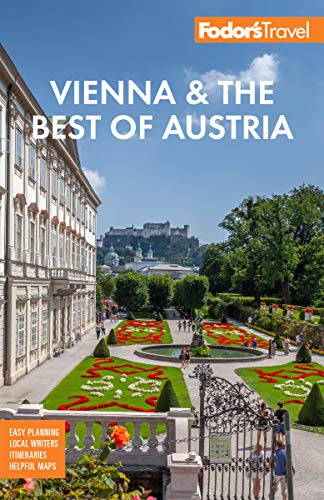Dining
When dining out, you'll get the best value at simpler restaurants. Most post Speisekarten(menus with daily specials) with prices outside. If you begin with the Würstelstand (sausage vendor) on the street, the next category would be the Imbissstube, for simple, quick snacks. Many meat stores serve soups and a daily special at noon. Many cafés also offer lunch. Gasthäuser are simple restaurants or country inns. Austrian hotels have some of the best restaurants in the country, often with outstanding chefs. Some Austrian chain restaurants offer excellent value for the money, such as the schnitzel chains Wienerwald and Schnitzelhaus and the excellent seafood chain Nordsee. With migration from Turkey and Northern Africa on the rise, and an influx of Balkan immigrants, thousands of small kebab restaurants have set up shop all over Austria. Many more vegan and vegetarian restaurants are popping up, with surprisingly tasty fare. In Vienna some restaurants go on serving until 1 and 2 am; a tiny number also through the night. The rest of Austria is more conservative.
In all restaurants be aware that the basket of bread put on your table isn't free. Most of the older-style Viennese restaurants charge €0.70–€1.25 for each roll that is eaten, but more and more establishments are beginning to charge a per-person cover charge—anywhere from €1.50 to €5—which includes all the bread you want, plus usually an herb spread and butter. Tap water (Leitungswasser) in Austria comes straight from the Alps and is some of the purest in the world. Be aware, however, that a few restaurants in touristy areas are beginning to charge for tap water.
Austrians are manic about food quality and using agricultural techniques that are in harmony with the environment. The country has the largest number of organic farms in Europe, as well as some of the most stringent food-quality standards. An increasing number of restaurants use food and produce from local farmers, ensuring the freshest ingredients for their guests.
Tipping
In Austria, tipping is customary. In cafés, bistros, and other less expensive eateries, the Viennese usually round up to the nearest euro. If they are very happy with the service in a fancier restaurant, they will give the waiter anywhere from €1 to €3. They never tip 15% to 20% of the total bill, as is customary in the United States. Tipping so much can be insulting to the waitstaff.
Costs
Wines, Beer, and Spirits
Austrian wines range from unpretentious Heurigen whites to world-class varietals. Look for the light, fruity white Grüner Veltliner, intensely fragrant golden Traminer, full-bodied red Blaufränkischer, and the lighter red Zweigelt. Sparkling wine is called Sekt, some of the best coming from the Kamptal region northwest of Vienna. Some of the best sweet dessert wines in the world (Spätlesen) come from Burgenland. Austrian beer rivals that of Germany for quality. Each area has its own brewery and local beer, to which people are loyal. A specialty unique to Austria is the dark, sweet Dunkles beer. Look for Kaiser Doppelmalz in Vienna, as well as Gössler. They even have a cycler's cider brew called Rädler. Schnapps is an after-dinner tradition in Austria; many restaurants offer several varieties, and it is not uncommon for the management to offer a complimentary schnapps at the end of a meal. One of the most popular types is nicknamed a "little Willy," made from the William pear.




